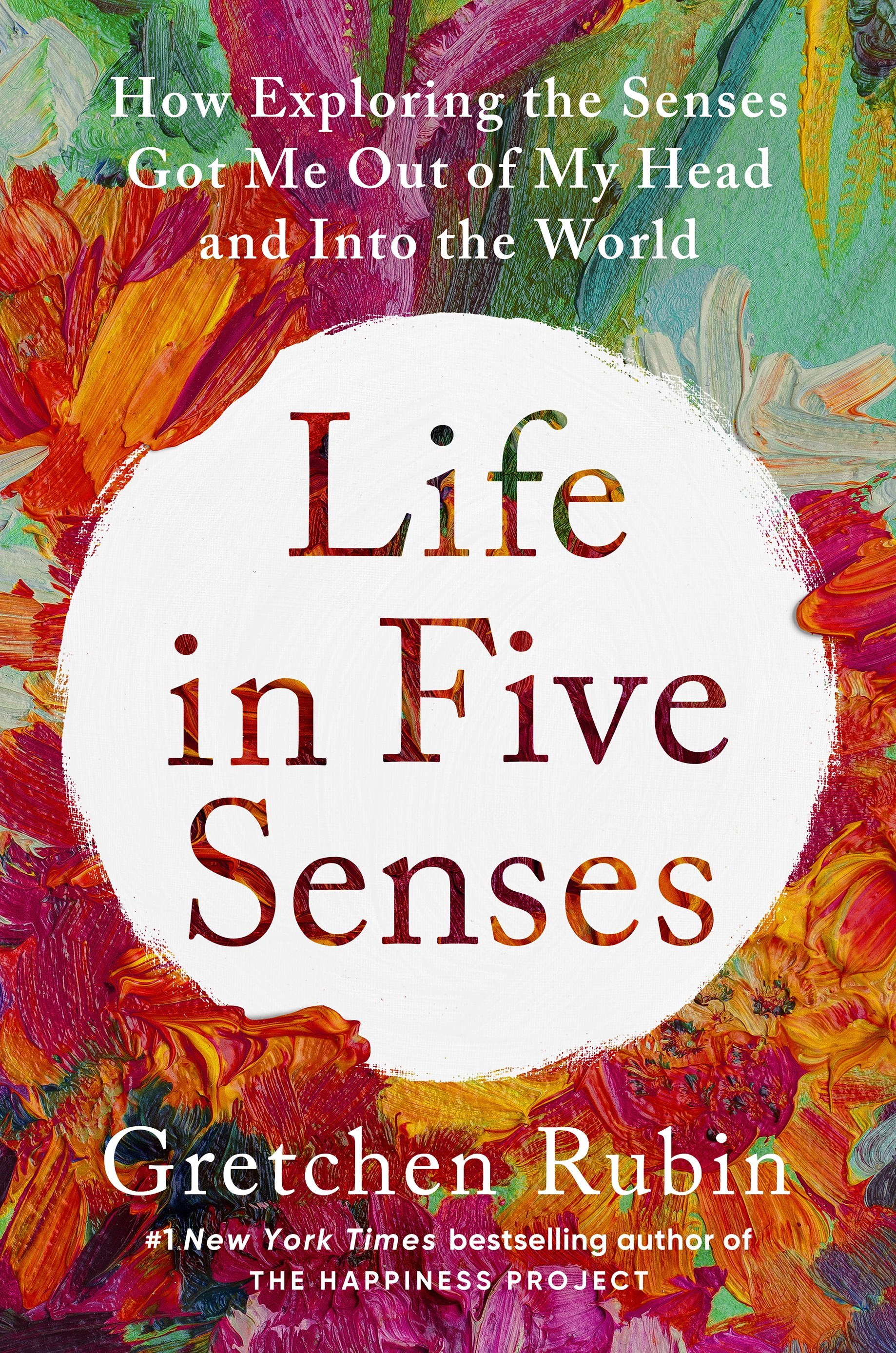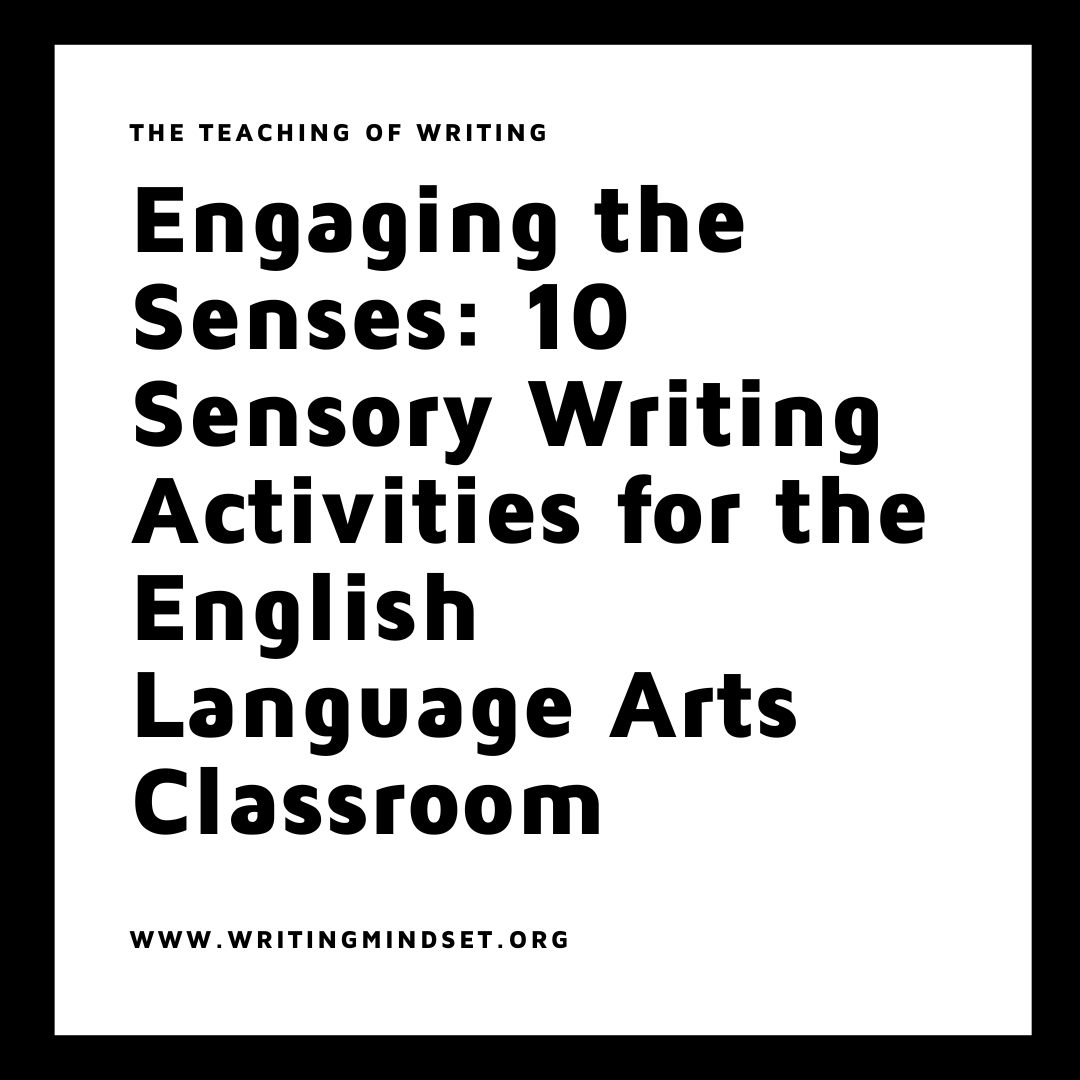Engaging the Senses: 10 Sensory Writing Activities for the English Language Arts Classroom
Including the Power of Sensory Regulation in the Secondary ELA Classroom, Too!
I feel like having a toddler around has helped me understand the role of sensory work and play far better than before parenthood. I even look back on my own childhood and remember moments where I can recall feeling dysregulated or something was off. I never liked the feeling of itchy socks on my toes. I hated having my hair done because of how it felt. When I initially started learning more about sensory play, one of the most powerful pieces was that everyone has sensory needs. Sensory regulation does not require a diagnosis, label, or “special” treatment. We all have the power to feel regulated or dysregulated by the work of the senses. Incorporating sensory experiences into the secondary English Language Arts (ELA) classroom can ignite students' creativity, deepen their understanding, and make writing come alive. By engaging multiple senses, educators can create a dynamic and immersive environment that inspires students to express themselves through writing. We can also help our students regulate their own systems and challenge behavior issues that are tied to classroom management. In this blog post, we will explore 10 sensory writing activities that can transform the ELA classroom into a hub of sensory exploration and literary expression.
10 Writing Activities to Use Now
Sensory Word Wall:
Create a sensory word wall in your classroom, displaying vivid and descriptive words that engage the senses. Encourage students to incorporate these words into their writing, enriching their descriptions and making their narratives more compelling. This type of word wall can also be used to describe the different areas in a classroom to help students understand to describe their worlds with more clarity.
Soundscapes
Play different soundscapes related to various settings, such as a bustling city, a peaceful forest, or a stormy sea. Ask students to write descriptive passages that capture the sounds they hear, enabling readers to imagine the scene vividly. Take it a step further and help them mimic snapshot descriptions of different places when you are teaching them to describe a place in a narrative scene.
Read Now >> Middle-Grade Narrative Writing: Using Mentor Texts to Describe Setting (Snapshots)
Sensory Object Descriptions:
Bring in a collection of objects with unique textures, smells, or sounds. Ask students to select an object, explore its sensory qualities, and write detailed descriptions that engage readers' senses. Encourage them to use metaphors and sensory language to convey their experiences. You can use this as a starting point for developing stories or narratives that contain these objects.
Read Now >> The Power of Play: Find Story Ideas Everywhere with Creative Writing Play Kits
Taste and Describe:
What group of students doesn’t like to eat? Bring in a variety of food samples or beverages that represent different flavors and aromas. Have students taste and describe the sensory experience, using vivid language to express the tastes, textures, and smells. This activity can be especially effective when teaching descriptive writing or poetry.
Sensory Poems:
Introduce different poetic forms, such as haiku or free verse, and encourage students to write sensory poems that evoke specific emotions or experiences. Ask them to focus on engaging all the senses, allowing readers to immerse themselves in the poet's world. Ever wonder why kids love onomatopoeias? Maybe because they remind them of graphic novels or maybe because they tap into much needed auditory input.
Read Now >> Build Classroom Community with Where I'm From Poems and I Am Poems
Sensory Walks:
Take students on sensory walks around the school or outside in nature. I use to call these adjective walks where kids can learn how to describe the world around them. Encourage them to observe and record their sensory experiences in a journal. Back in the classroom, have students use their observations as inspiration for descriptive writing, creating vivid scenes and characters.
Texture Collages:
Provide magazines, fabric scraps, and other materials with varying textures. Ask students to create texture collages by cutting out and arranging different textures. Afterward, have them write descriptive paragraphs or short stories inspired by their collages, incorporating sensory details. You could also have them add these types of crafts to a classroom journal.
Sensory Character Profiles:
Have students choose a character from a novel or short story they are studying. Encourage them to create sensory-based character profiles, describing how the character looks, sounds, smells, and feels. This activity deepens their understanding of characters and helps them develop well-rounded descriptions.
Sensory Story Starters:
Provide students with sensory prompts, such as "I woke up to the smell of..." or "I heard a mysterious sound coming from..." Ask them to complete the story by incorporating sensory details and engaging the reader's imagination.
Sensory Similes and Metaphors:
Explore similes and metaphors with a sensory twist. Ask students to create similes or metaphors that compare objects, emotions, or experiences to sensory elements. For example, "Her laughter was as sweet as freshly baked cookies."
Bonus activity-Calm Down a Noisy Room with ASMR:
When I suggest ASMR, some people immediately make a frowny face. I get it. If you search for ASMR videos, you will start to find ones that deal with massage, eating, and generally weird noises that are meant to calm people down. I would recommend heading into the “oddly satisfying” realm when you consider using these types of videos in the classroom. Things like drawing, sand, slime, and surprisingly cooking! I remember I would always catch one of my students watching cooking videos and at the time, I couldn’t figure out why. Now, I know she was just trying to regulate her senses.
A Final Thought
By incorporating sensory writing activities and sensory play activities into the ELA classroom, educators can empower students to engage their senses, deepen their understanding of literary concepts, and create vivid, immersive writing. These activities foster descriptive skills, promote creative expression, and enhance students' ability to engage readers through sensory language. Embrace the power of sensory writing and watch your students' writing skills and enjoyment of the written word expand beyond the page.
I love Gretchen Rubin’s recommendations in her book Life in Five Senses: How Exploring the Senses Got Me Out of My Head and Into the World to simply record your five senses observations each day. This would make a great journal exercise to try out for a week as a self-check-in.
Touch- What do you touch? What do you feel when you are experiencing different emotions?
Taste- What do you crave? What different tastes do you associate with different experiences?
Sight- What do you see? What do you see when you look past what you normally see?
Smell- What do you smell? What smells are you ignoring on purpose? What smell could be a trigger for a feeling or emotion?
Sound- What do you hear? What do you hear beyond the everyday classroom noise?
For many classroom teachers, our senses are on immediate overload when we walk into our classrooms. Gretchen Rubin reminds us, “Acknowledging that people experience sensations in different ways can help us all be more understanding-not to dismiss people’s objections to sights, sounds, smells, tastes, or touches, but instead to respect them so that we can create sensory environments in which everyone can feel comfortable. While studying such differences was beyond the scope of my project-to explore my own five senses-recognizing them underscored an important truth: We each live in the brew of our own sensations” (15).
Some questions to ponder:
What behaviors in our classrooms are really sensory seeking or sensory avoiding?
How do our own sensory needs show up in our classrooms? How does this impact our teaching?
How can we incorporate more sensory-sensitive activities to help our students regulate their own minds and bodies?
Book Recommendation
Gretchen Rubin’s Life in Five Senses: How Exploring the Senses Got Me Out of My Head and Into the World would make a great staff read to start talking about sensory work inside and outside of the classroom.






